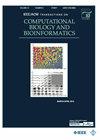Hierarchical Hypergraph Learning in Association- Weighted Heterogeneous Network for miRNA- Disease Association Identification
IF 3.4
3区 生物学
Q2 BIOCHEMICAL RESEARCH METHODS
IEEE/ACM Transactions on Computational Biology and Bioinformatics
Pub Date : 2024-10-30
DOI:10.1109/TCBB.2024.3485788
引用次数: 0
Abstract
MicroRNAs (miRNAs) play a significant role in cell differentiation, biological development as well as the occurrence and growth of diseases. Although many computational methods contribute to predicting the association between miRNAs and diseases, they do not fully explore the attribute information contained in associated edges between miRNAs and diseases. In this study, we propose a new method, Hierarchical Hypergraph learning in Association-Weighted heterogeneous network for MiRNA-Disease association identification (HHAWMD). HHAWMD first adaptively fuses multi-view similarities based on channel attention and distinguishes the relevance of different associated relationships according to changes in expression levels of disease-related miRNAs, miRNA similarity information, and disease similarity information. Then, HHAWMD assigns edge weights and attribute features according to the association level to construct an association-weighted heterogeneous graph. Next, HHAWMD extracts the subgraph of the miRNA-disease node pair from the heterogeneous graph and builds the hyperedge (a kind of virtual edge) between the node pair to generate the hypergraph. Finally, HHAWMD proposes a hierarchical hypergraph learning approach, including node-aware attention and hyperedge-aware attention, which aggregates the abundant semantic information contained in deep and shallow neighborhoods to the hyperedge in the hypergraph. Our experiment results suggest that HHAWMD has better performance and can be used as a powerful tool for miRNA-disease association identification.用于 miRNA 与疾病关联识别的关联加权异构网络中的层次超图学习
微小核糖核酸(miRNA)在细胞分化、生物发育以及疾病的发生和发展中发挥着重要作用。虽然许多计算方法有助于预测 miRNA 与疾病之间的关联,但它们并没有充分挖掘 miRNA 与疾病之间关联边所包含的属性信息。在本研究中,我们提出了一种新方法--用于 MiRNA 与疾病关联识别的关联加权异构网络中的层次超图学习(HHAWMD)。HHAWMD 首先基于通道注意力自适应地融合多视图相似性,并根据疾病相关 miRNA 表达水平的变化、miRNA 相似性信息和疾病相似性信息区分不同关联关系的相关性。然后,HHAWMD 根据关联程度分配边权重和属性特征,构建关联加权异构图。接着,HHAWMD 从异质图中提取 miRNA-疾病节点对的子图,并在节点对之间建立超边(一种虚拟边),生成超图。最后,HHAWMD 提出了一种分层超图学习方法,包括节点感知注意力和超边感知注意力,将深层和浅层邻域中包含的丰富语义信息聚合到超图中的超边。实验结果表明,HHAWMD 具有更好的性能,可作为 miRNA 与疾病关联识别的有力工具。HHAWMD的源代码和数据可在https://github.com/ningq669/HHAWMD/。
本文章由计算机程序翻译,如有差异,请以英文原文为准。
求助全文
约1分钟内获得全文
求助全文
来源期刊
CiteScore
7.50
自引率
6.70%
发文量
479
审稿时长
3 months
期刊介绍:
IEEE/ACM Transactions on Computational Biology and Bioinformatics emphasizes the algorithmic, mathematical, statistical and computational methods that are central in bioinformatics and computational biology; the development and testing of effective computer programs in bioinformatics; the development of biological databases; and important biological results that are obtained from the use of these methods, programs and databases; the emerging field of Systems Biology, where many forms of data are used to create a computer-based model of a complex biological system

 求助内容:
求助内容: 应助结果提醒方式:
应助结果提醒方式:


